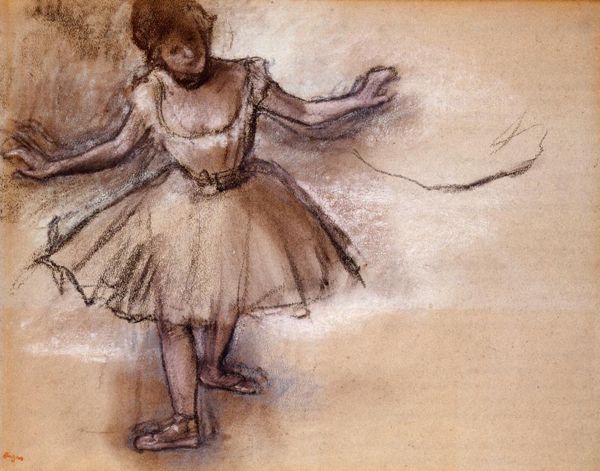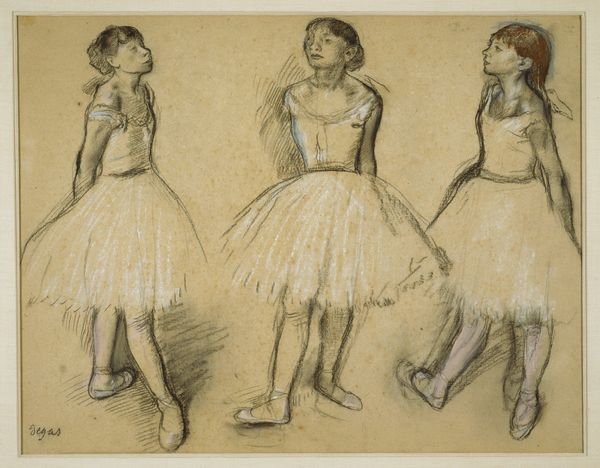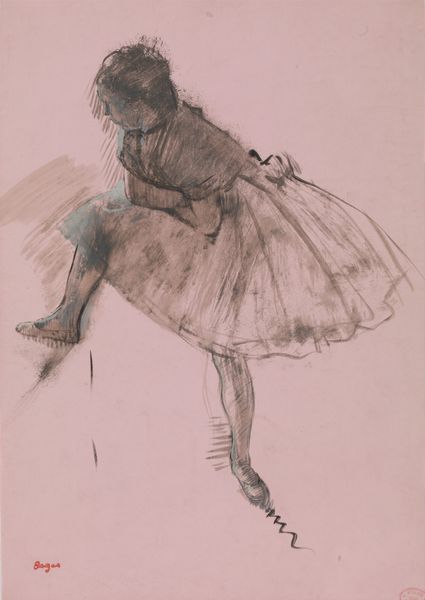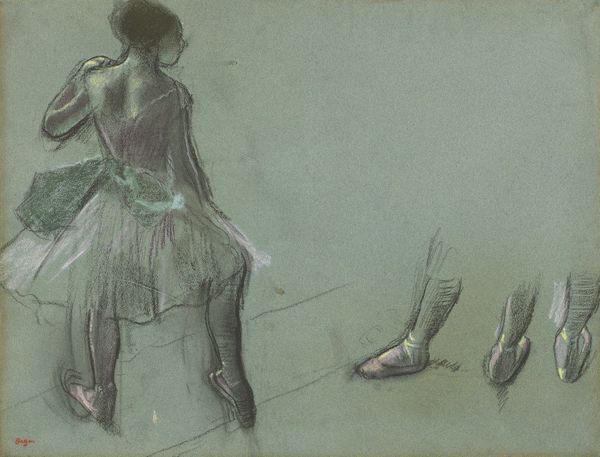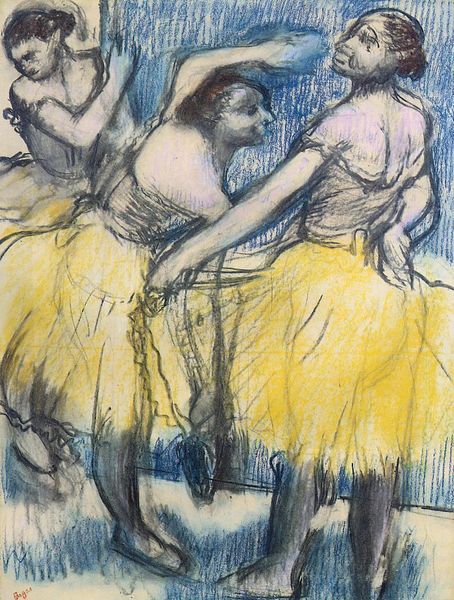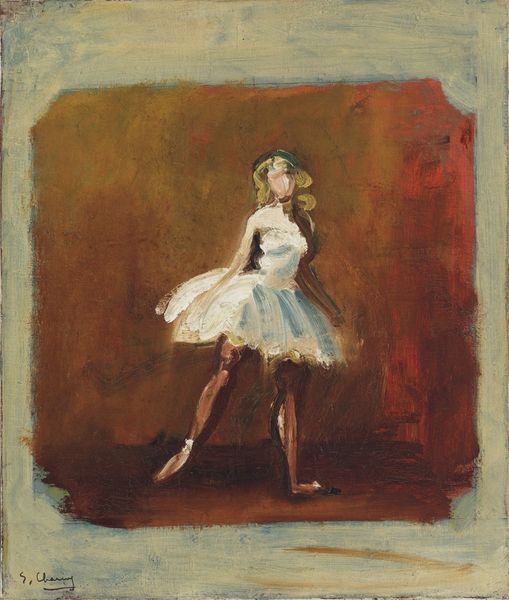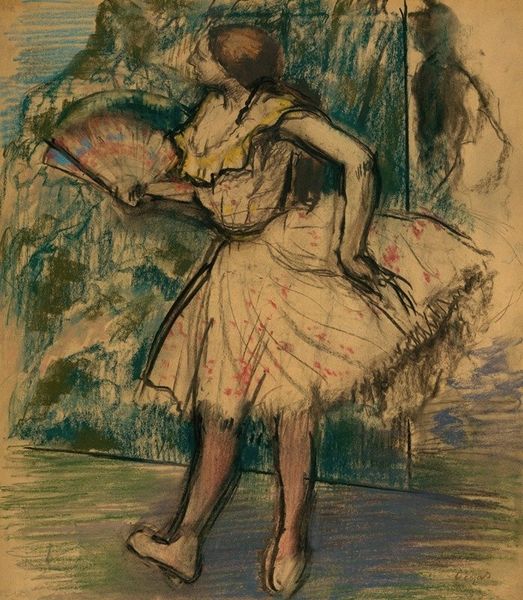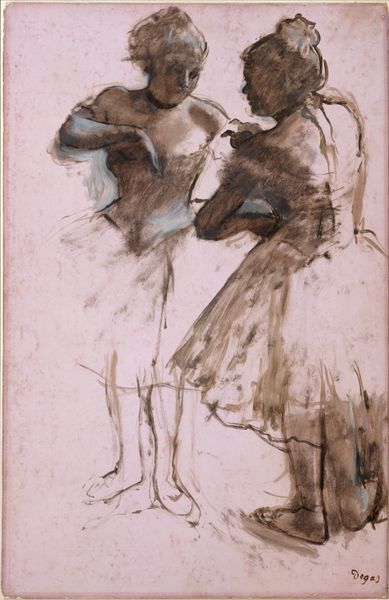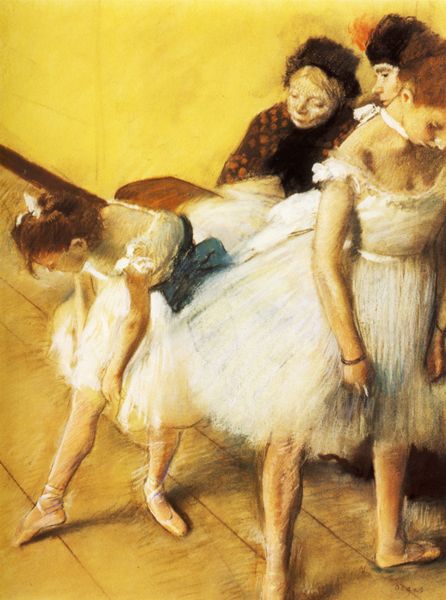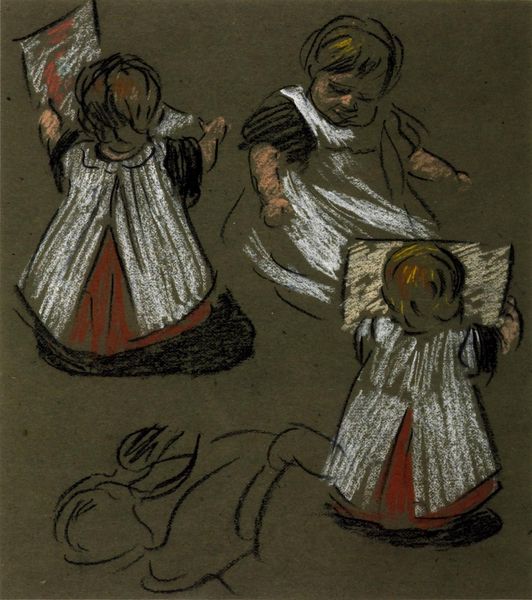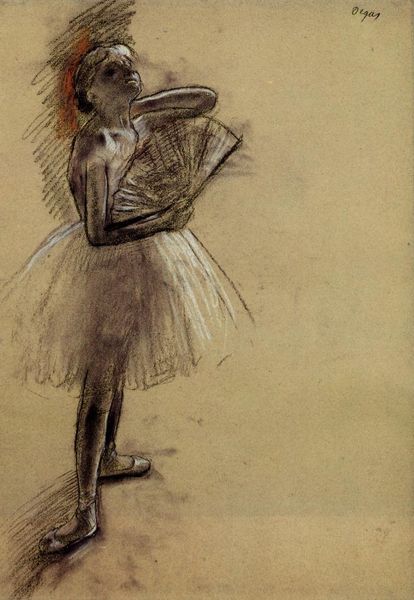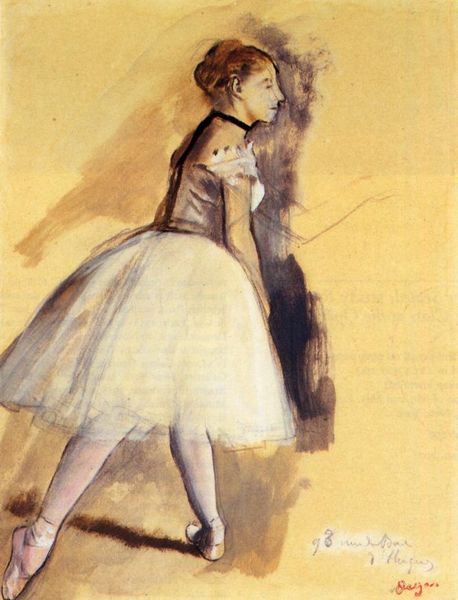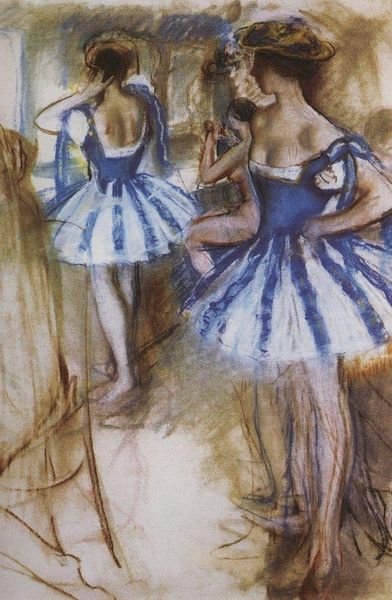
drawing, pencil
#
portrait
#
drawing
#
impressionism
#
figuration
#
sketch
#
pencil
Dimensions: 46 x 57 cm
Copyright: Public domain
Curator: Let's consider Edgar Degas's "Study for the Fourteen Year Old Little Dancer," from 1881, a pencil drawing currently held in a private collection. Editor: It's ethereal, almost fragile. The simplicity of the line work and the soft hatching give it a sense of quiet vulnerability. I almost feel like I'm intruding on a private moment. Curator: Degas was consistently interested in portraying working-class women. The piece offers a glimpse into the life of a young dancer in late 19th-century Paris, a world heavily policed, even regulated, by the male gaze of the opera and its wealthy patrons. Editor: Absolutely. The materials contribute to this tension. The raw, unfinished quality of the sketch contrasts sharply with the rigid discipline of ballet. It exposes the labor behind the illusion, revealing the girl's youth and vulnerability. Those marks, they're not just lines, they're pressure, revealing the artist's own movements and the resistance of the paper. Curator: It's a study for the sculpture exhibited at the 1881 Impressionist exhibition, which, notoriously, sparked considerable debate, even revulsion. Critics condemned its realism, seeing it as unflattering. The actual sculpture also incorporated fabric tutu and even hair adding another complex material layer. Editor: Right, that layered materiality points to the commercial reality of ballet as a spectacle. But in this drawing, Degas emphasizes the girl's labor, her body, making visible the grueling hours of practice and the sacrifices demanded of these young dancers. I feel compassion and discomfort simultaneously. Curator: That discomfort is important. Degas is not just presenting beauty; he is inviting us to consider the complex social forces at play and the lives of these often exploited young women. It’s a very strong statement on the social implications of art itself. Editor: Looking at it now, I am struck by how the rawness of the sketch becomes an act of defiance against the smooth surfaces and polished illusions expected of ballet. This pencil drawing allows her some agency, rescuing her, in some small way, from pure spectacle. Curator: Indeed. It is important for audiences to know about this study within that layered cultural context. Editor: For me, reflecting on those graphite marks adds another perspective of both exploitation and resistance. Thank you.
Comments
No comments
Be the first to comment and join the conversation on the ultimate creative platform.
